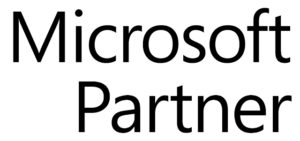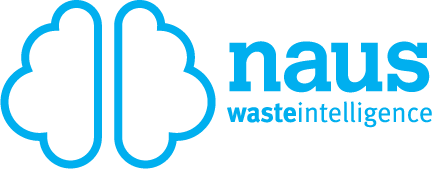Overview
Distributing approximately 90,000 waste vouchers at an average value of $90 per voucher, this case study features a progressive Local Government Authority and early adopter of technology that can support their ratepayers and residents.
Council had anecdotal evidence of fraud in their waste voucher program without the data to quantify or understand the magnitude of the problem. In addition, there were a significant number of lost voucher claims from residents and ratepayers which tied up the Customer Service and Waste teams.
Project Objective
The council had identified a number of key objectives within this project:
- Eliminate fraud from copied and commercial use of residential waste vouchers
- Maximise income through everyone paying the correct amount
- Capture better data to make better decisions
The Situation
Mandalay Product
In 2017, the Waste Team within council installed the Mandalay Facility Product Suite (formerly known as Mandalay CS). In 2019 they transitioned to Mandalay’s cloud-based product, the naus Platform, along with implementing Voucher Management and the data and analytics product, naus Insights.
Waste Vouchers
Vouchers are printed on rates notices. They are distributed each August and are valid for use until the following December. Council had been providing ratepayers with waste vouchers for a number of years.
Voucher Security and Audit Trail
For a while, vouchers were printed with a red line security strip for added security however, the cost to have the strip inserted was prohibitive. A barcode solution was then introduced and still issued on the rates notice. However, there was no audit trail, so if the use was disputed there was no way to confirm the voucher had already been used and customers were let through the gate to avoid confrontational situations and ensure the safety of staff. Particularly on weekends, it took significant time at the gate with residential customers delaying commercial customers causing more stress.
Barcode Printing Issues
The Barcode caused other significant issues. Despite clear instructions to the printers for two consecutive years, there were mistakes with the same bar codes being printed two years in a row. This caused significant issues in the system with 100’s of errors occurring before realising what the problem was. In the second year an extra 0 was added in the middle of the barcode, leading to some rate payers able to use their voucher up to nine times.
Voucher Fraud
Additional problems experienced with barcodes included occasional bad reads (generally due to damaged vouchers), plus, vouchers were being photocopied and traded on social media. A marketing campaign was launched in an effort to reduce fraud but with unknown results. Customer Service Waste Entitlement Vouchers were issued to replace lost vouchers, handle new residents and customer service issues. The facility could also create and process lost tickets at the gate. Council knew there was fraud occurring, but without audit and tracking capability there was no way to qualify or resolve the issue.
Although reporting was available within Mandalay’s Facility Product Suite (Mandalay CS), the underlying issues gave little confidence as to the integrity of the numbers.
The Challenge
The challenge at its core was a lack of trustworthy data about the whole waste program along with anecdotal evidence of significant fraud but being unable to quantify it. The residents and ratepayers ultimately fund the council and as such, decisions around changes to existing processes and systems and the provisions of services can be difficult for council without clear hard evidence.
The specific challenges that this council needed to address and overcome included:
- Understanding the source, volume, and value of waste being brought into their facility to better plan its future needs and capacity.
- Having the analysis, insights, and knowledge to develop a strategic view and plan for waste and resident entitlements.
- Ensuring consistency and discipline around adherence to the rules, policies, and systems involved in the waste voucher system.
- Preventing photocopying and fraudulent creation of vouchers.
- Tracking entitlements at an individual level and being confident in the information available in the system.
- The ability to quickly and easily deal with waste entitlement questions when customers first contact Customer Service, instead of being handled by the waste team who were without adequate resources.
- Removing difficult discussions about entitlements and lost tickets at the facility gatehouse.
- Tracking commercial customers using resident vouchers to avoid paying the commercial rate on waste disposal.
- Managing social housing that had been listed as one property, where, in reality, they were made up of 300 units.
The Solution
In order to meet all of the identified challenges, Mandalay installed the Voucher Management product, just one of the products available within the Resident Product Suite. The system was implemented during 2019 with initial waste vouchers issued in August 2019 for the 2020 season.
What did the process look like?
- Council properties were compared and correlated to the 14.5 million properties in Mandalay’s national database. This ensured quality data, that council can integrate back into their systems if required.
- Mandalay created individually unique codes per property that were provided to the printer who, through a QR code generator, printed the relevant image on each unique property section on the front page of the rates notices.
- Council sent the rates notices to ratepayers by post.
How are vouchers redeemed?
- Ratepayers present their voucher (rates notice, or photo of their rates notice) at the facility gate.
- The QR code is scanned and validated by Mandalay’s Facility Product Suite, which will also identify usage, liability, and status of the voucher being presented.
- Facility Product Suite Ticketing automatically identifies voucher as the payment type when the voucher is scanned by the operator, so no additional information needs to be entered. A secondary payment method can be added to the transaction if required.
Implementation and Change Management
Having a change management process in place was crucial to the project’s success. Due to its intuitive and simple nature, the initial training on the Voucher Management product was conducted via a remote training session with the Waste Coordinator.
Operator Training
Internally, a presentation was conducted by the Waste Coordinator outlining the reasons for the change. This was followed by user training with key stakeholders including:
- Staff at the facility – Weighbridge operators were provided with a script to help them gain confidence in the new procedure. The Waste Coordinator also spent the first day working alongside staff, increasing confidence with the process change and access to the additional information.
- Customer service team – Initially presented to approximately 80 customer service officers, the change was welcomed very positively.
The Customer Service team supervisor now trains all new Customer Service staff as they start. Ongoing support for staff is managed through the Council’s online help tools.
The Outcome
Previously, when Council identified an issue with a voucher, it would often lead to a dispute with the holder and leave little option but to let them through. Now, operators can give details surrounding prior voucher usage (date and time) which gives them confidence and certainty in the quality of the records. Operators can insist on payment at the time and those that are insistent, pay and are referred to the Waste Team. Since implementing the solution, there have only been three such requests.
Implementation Success
Success was achieved across a number of key areas within the organisation.
- The project was delivered on budget.
- Waste transactions have been decreased, particularly through a reduction in commercial customers fraudulently using residential waste vouchers.
Behaviours
- In one example, the voucher system analytics has highlighted a single customer who has used $80,000 in waste vouchers. Most likely a commercial operator who is incorrectly using resident waste vouchers.
- Customers have been bringing heavy loads to the facility (up to $300 per load) and assuming they can use their waste voucher. However, vouchers have an assigned value of $90 per voucher.
Productivity
Reduced cost or productivity:
- During this period, council reduced its offer of vouchers to one
- The number of vouchers being presented has significantly lowered. This can be attributable to a reduction in fraud.
- The lack of data gathered prior to using Voucher Management means we don’t have the data to say whether there has been an improvement in cost reduction.
- Council now offers a more efficient process through a reduction in interactions at the facility window and with customer service.
- Customer service phone calls have reduced, and Customer Service now has the ability to resolve voucher questions during the resident’s first phone call.
Strategy
Based on the data and insights being provided from the Voucher Management product, there are several new considerations that can be investigated:
- The possibility of closing a transfer station or increasing facilities to include satellite locations.
- Opening new facilities in areas where customers are taking their waste. Enabled through tracking waste source to where it is being presented.
Key Learnings
Unexpected Outcomes
- The volume of commercial customers using residential vouchers was surprising.
- During training it was identified that Weighbridge Operators were unaware of the rules around vouchers.
Take Homes and Advice offered from Council
Here is a list of take-homes and advice shared by council that they identified through the planning and implementation of this project.
- Have a collective approach by involving all key stakeholders in the process: Waste teams, Customer Service, and Technology.
- Be prepared and planned in your approach.
- Talk with other councils about their voucher programs. Become an expert.
- Design a full change management process as it is a big change and involves both direct and indirect responsibilities.
- Treat it as an operational change rather than strategic. Consider the right way to approach it. Consider what the blockers would be. Remember that waste vouchers are political, so it pays to always be nervous about it.
- Remember that for the rates department, setting up and including the waste voucher with the rates notice is a small part of their overall duties and they are always under enormous time pressure.
- Always test, test, test: we did a minimum of 100 tests so issues could be identified early.
- To support your Weighbridge Operators, design in detail the step-by-step process at the gate and provide a script to help Operators become accustomed with the change. Make sure it is as foolproof as possible to give the team absolute confidence and trust in the system.
- Customers will often use intimidation. By providing a script and having the Waste Coordinator onsite to support Operators on the first day, meant they gained confidence in the new process quickly.
- The script was simple “The voucher you have presented has already been used so I cannot accept it as payment today.”
- It was assumed that Operators would continue having to let customers through to avoid dispute, but it didn’t happen.
- People are always trying to find new ways to get around the system.
- Be cautious and aware of new ideas and opening the flood gates.
- You must be tougher and adhere to the rules.
Big Challenges to Consider
- Waste Vouchers are a customer-facing product and rates notices are very political. You must get it right.
- Start preparing your voucher templates early. If you want them ready to go out with rates notices in August, you need to start preparing in April.
- Allow enough time to get the details right.
- Consider having a dedicated resource to manage the planning and implementation of your voucher program.
Visit our Voucher Management and Resident Services pages to learn more about these Mandalay Products.


